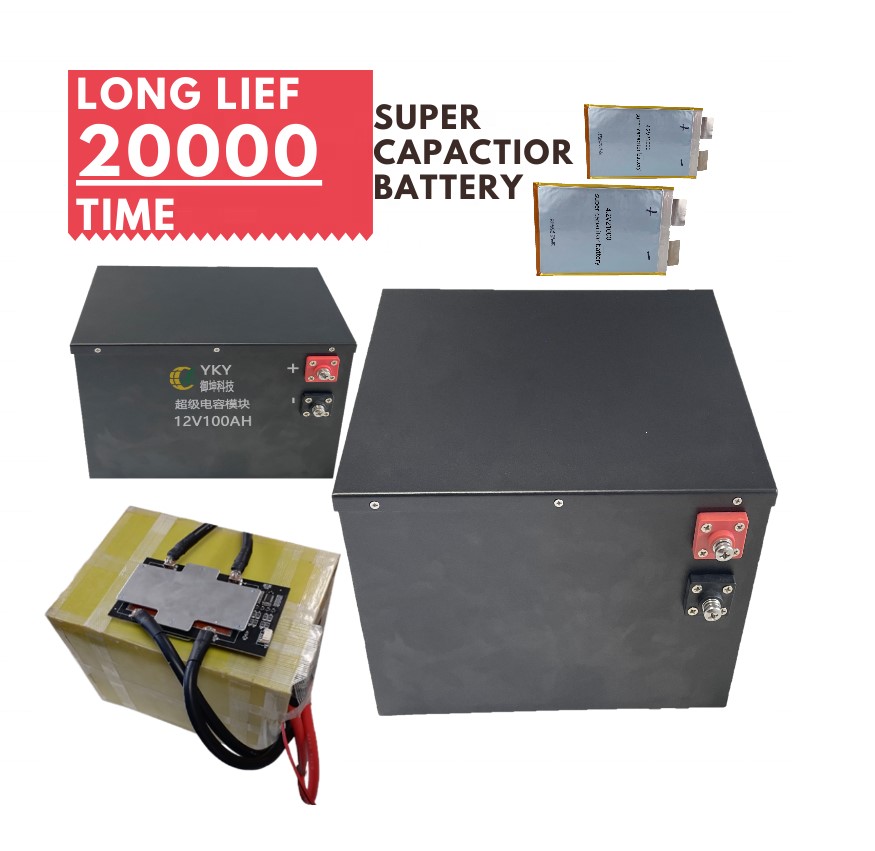Consulting phone:
135-3037-2041
(Mr.Wang)
Product introduction:
Supercapacitor module is a hybrid electrochemical energy storage device that combines the embedding mechanism of lithium-ion battery anode and the double-layer mechanism of double layer capacitor (EDLC) cathode. The combination of negative electrode type LTO electrode and positive electrode capacitor type activated carbon (AC) results in an energy density of approximately. Approximately 4-5 times the size of a standard double layer capacitor (EDLC). However, power density has been proven to match EDLC as it can fully discharge within a few seconds. On the negative electrode (anode) of activated carbon, charges are stored in a double layer formed at the interface between the electrode and electrolyte. Like EDLC, the voltage of LIC varies linearly, which increases the complexity of integrating them into systems with power electronic devices that expect more stable battery voltage. Therefore, LICs have a high energy density, which varies with the square of the voltage. The capacitance of the anode is several orders of magnitude larger than that of the cathode. Therefore, the change in anode potential during the charging and discharging process is much smaller than the change in cathode potential.
Product specification:
| project | characteristic |
| Rated voltage | 12V or customized |
| capacity | 100AH or customized |
| Operating temperature | - 40 ℃ - 65 ℃ |
| Tolerance | 0+20% |
| Size | 26*22*20Cm |
| Wire length | 17.28KG |
| Temperature characteristic | rom - 40 ℃ to 65 ℃ Capacity change: 30% of △ c ∠ initial measured value @ 25 ℃ Internal resistance change: 100% of △ ESR ∠ nominal valuef |
| High temperature load life | 25 ℃ and rated voltage, 1000h load capacity change: 30% of △ c ∠ initial measured value @ 25 ℃ internal resistance change: 200% of △ ESR ∠ nominal value |
| Normal temperature load life | 10 year capacity change of load under 25 ℃ and rated voltage: 30% of △ c ∠ initial measured value @ 25 ℃ internal resistance change: 200% of △ ESR ∠ nominal value |
| Under the normal temperature cycle life | of 25 ℃, the capacity change after 500000 charge discharge cycles (from rated voltage to 1/2 rated voltage): 30% of the initial measured value of △ c ∠ @ 25 ℃ internal resistance change: 200% of the nominal value of △ ESR ∠ |







